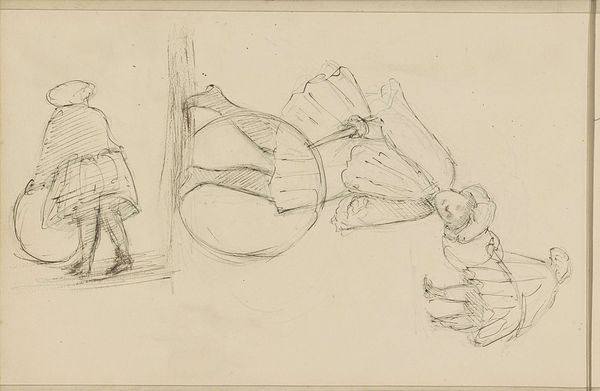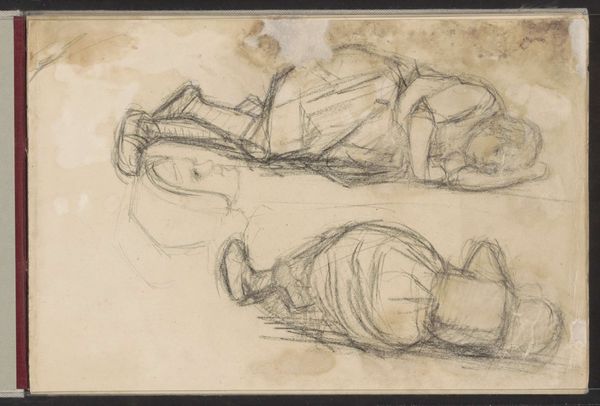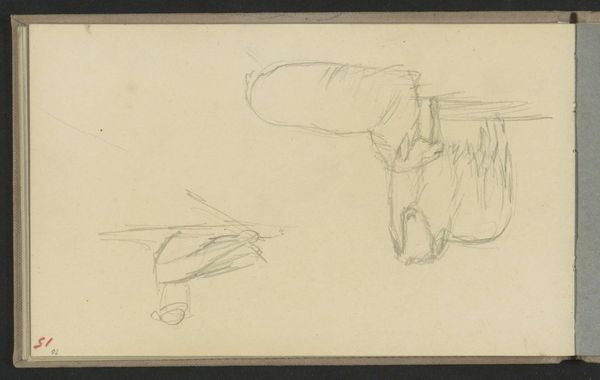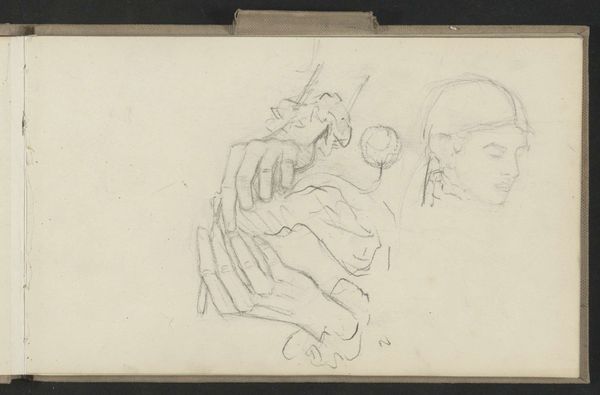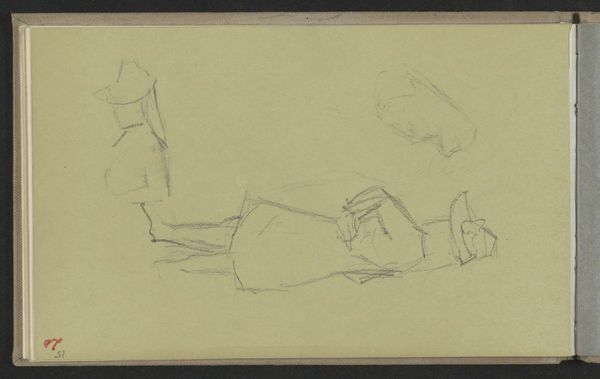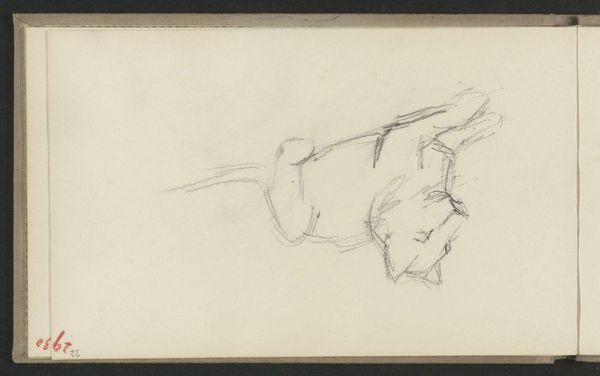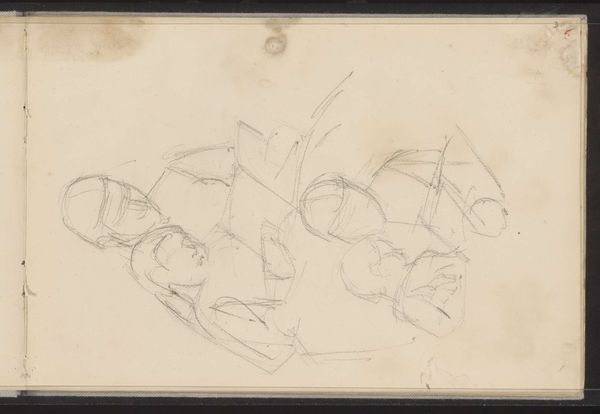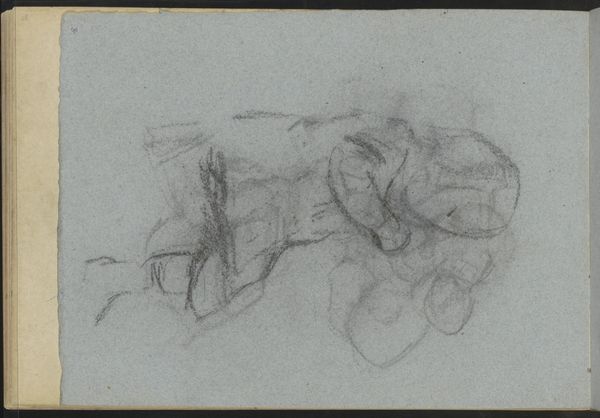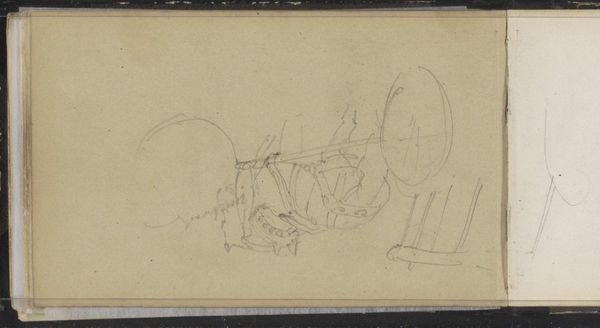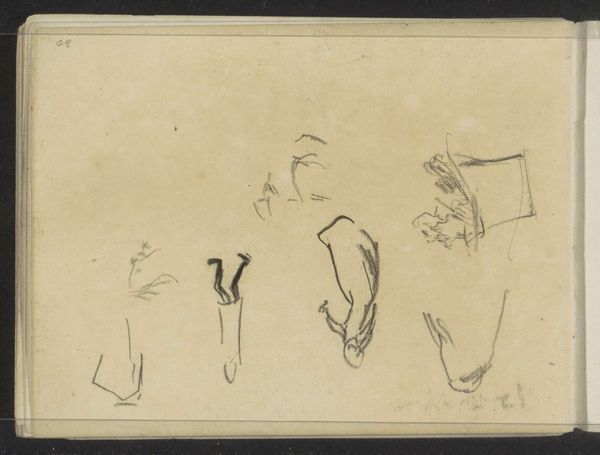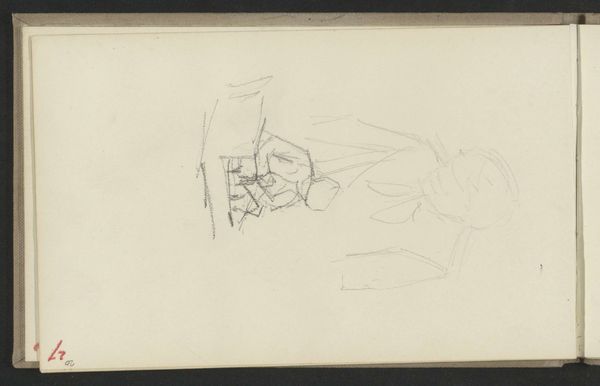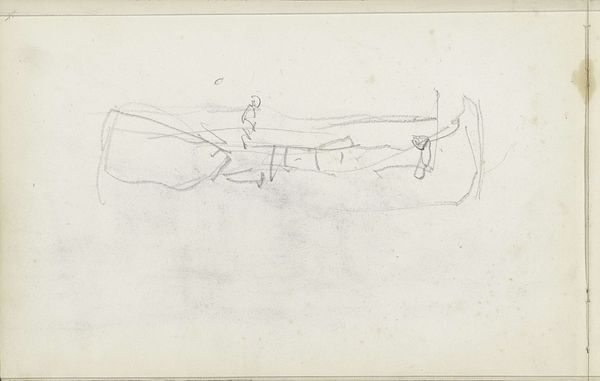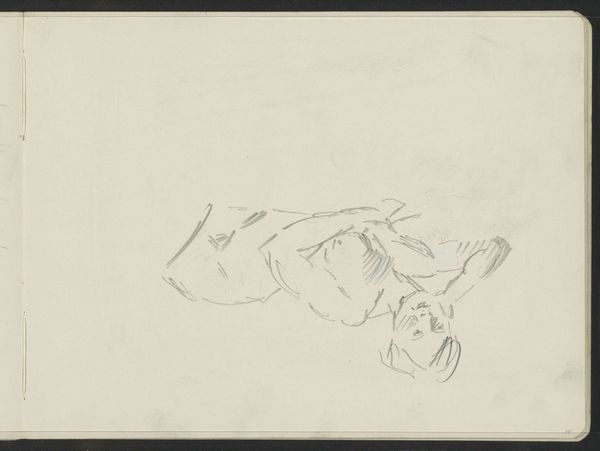
Zittend meisje met opgetrokken knieën en een paard voor een huifkar 1834 - 1911
0:00
0:00
jozefisraels
Rijksmuseum
drawing, paper, pencil
#
drawing
#
landscape
#
figuration
#
paper
#
pencil
Copyright: Rijks Museum: Open Domain
Editor: Here we have Jozef Israëls' "Zittend meisje met opgetrokken knieën en een paard voor een huifkar," created sometime between 1834 and 1911. It's a pencil drawing on paper, and the overall impression is one of a fleeting glimpse into a quiet moment. I'm struck by its intimacy, like we're looking at a private page from the artist's sketchbook. What catches your eye about it? Curator: What interests me most about this unassuming drawing is the context within which Israëls was working. Consider the rise of Realism in the mid-19th century and its focus on everyday life, especially that of the working class. How do you think this sketch fits into that larger movement? Editor: Well, the girl certainly seems like an ordinary subject, not idealized or romanticized in any way. The horse and cart also suggest a working environment. But it also feels very personal. Is that a conflict or can it work? Curator: It's precisely that tension that makes it compelling! Israëls was part of the Hague School, deeply influenced by French Realism, yet he infused his work with a strong sense of empathy. Look at the girl's posture, the curve of her back. What does that pose convey to you? Editor: There's a vulnerability, maybe even weariness, in her posture. Like she's seeking refuge, maybe a bit of rest. So, in a way, it's not just Realism, but almost a social commentary through feeling? Curator: Exactly! And that's where the politics of imagery come into play. Israëls wasn't just depicting a scene, he was subtly inviting viewers to connect with the human condition of his subjects. What do you think an audience viewing this at the Rijksmuseum might have been expected to do or feel? Editor: I imagine the viewer is being urged to connect with the reality of those in need in Holland. I hadn't considered that social aspect, focusing so much on the intimate composition at first glance! Curator: It shows how seemingly simple sketches can carry complex layers of meaning when viewed through a historical lens. Editor: Absolutely, understanding that historical context transforms it. Thank you.
Comments
No comments
Be the first to comment and join the conversation on the ultimate creative platform.
